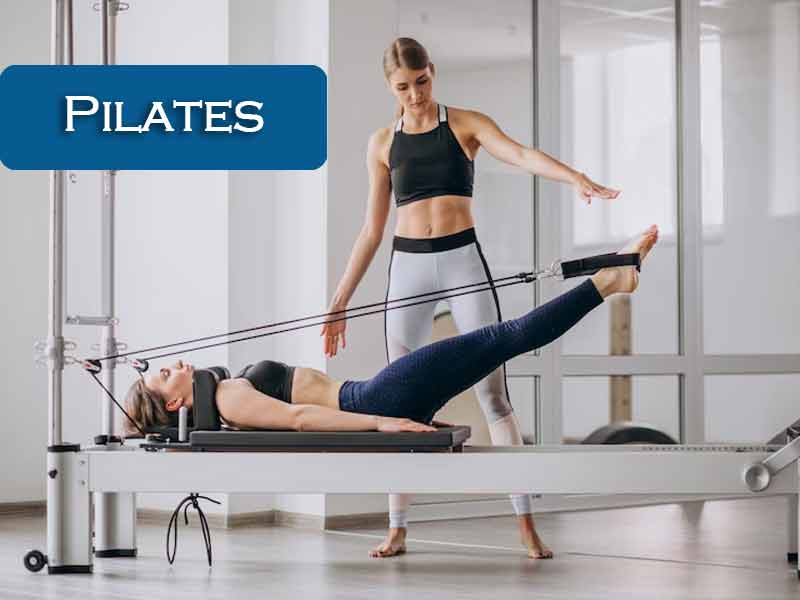Pilates is a form of exercise that has been growing in popularity in recent years. It is a low-impact workout that focuses on developing core strength, flexibility, and balance. Pilates is a great choice for a morning workout because it is gentle on the joints, helps to wake up the body, and can help set a positive tone for the rest of the day.
What is Pilates?
Pilates is a form of exercise that was developed by Joseph Pilates in the early 20th century. It is a system of exercises that focuses on developing strength, flexibility, and control of the body.

The exercises are performed on a mat or on specialized Pilates equipment, such as the reformer or the Cadillac. Pilates is a low-impact workout that can be modified for any fitness level, making it accessible to people of all ages and abilities.
Benefits of Pilates
- Develops Core Strength: Pilates is known for its focus on developing core strength. The exercises in Pilates require you to engage your deep abdominal muscles, which can help to develop a strong and stable core. A strong core is important for maintaining good posture, improving balance, and preventing injury.
- Increases Flexibility: Pilates is also great for improving flexibility. The exercises in Pilates focus on lengthening and stretching the muscles, which can help to improve range of motion and prevent injury.
- Improves Posture: Good posture is important for overall health and well-being. Pilates can help to improve posture by strengthening the muscles that support the spine and promoting proper alignment of the body.
- Relieves Stress: Pilates is a low-impact workout that can be very relaxing. The focus on breathing and mindful movement can help to reduce stress and promote relaxation.
- Low-Impact: This exercise is a low-impact workout that is easy on the joints. It is a great choice for people who are looking for a gentle workout that won’t put too much stress on the body.
- Versatile: This exercise can be modified for any fitness level, making it accessible to people of all ages and abilities. The exercises can also be adapted to target specific areas of the body, making it a versatile workout that can be customized to meet your individual needs.
Pilates Exercises for Beginners
If you’re new to Pilates, it’s important to start with the basics.

Here are some Pilates exercises for beginners that you can try:
- The Hundred: Lie on your back with your knees bent and feet flat on the ground. Lift your head and shoulders off the ground and extend your arms straight out in front of you. Pump your arms up and down while inhaling for five counts and exhaling for five counts. Repeat for a total of 100 pumps.
- Roll-Up: Lie on your back with your arms extended overhead. Slowly roll up, one vertebra at a time, until you are sitting upright. Roll back down to the starting position, one vertebra at a time.
- Single Leg Circles: Lie on your back with your arms at your sides and your legs extended straight up towards the ceiling. Circle one leg in one direction, then switch and circle the other leg in the opposite direction.
- The Swan: Lie on your stomach with your hands by your shoulders. Press your hands into the ground and lift your chest and head off the ground. Lower back down to the starting position.
- The Plank: Start in a push-up position with your hands directly under your shoulders. Hold your body in a straight line from your head to your heels for 30 seconds to a minute.
These are just a few of the many Pilates exercises that you can try as a beginner. It’s important to focus on proper form and alignment during each exercise to ensure that you are getting the most out of your workout.
Pilates for Morning Workouts
Pilates is a great choice for a morning workout for a few reasons. First, it is a low-impact workout that is easy on the joints. This can be especially important in the morning, when your body may be stiff from sleeping.

Second, Pilates can help to wake up the body and get the blood flowing. The focus on breathing and mindful movement can also help to reduce stress and set a positive tone for the rest of the day.
If you’re looking to incorporate Pilates into your morning routine, here are a few tips to help you get started:
- Start with a Warm-Up: Before you begin your Pilates workout, it’s important to warm up your body. This can help to reduce the risk of injury and prepare your body for the workout ahead. A simple warm-up could include some light cardio, such as walking or jogging in place, or some dynamic stretching.
- Set a Routine: To get the most out of your Pilates workout, it’s important to be consistent. Try to set a routine that you can stick to, such as doing Pilates every morning for 20 minutes. This can help you to build a habit and make Pilates a regular part of your morning routine.
- Mix it Up: This exercise is a versatile workout that can be adapted to target specific areas of the body. To keep your workout fresh and challenging, try mixing up the exercises that you do. You can also try adding in some Pilates equipment, such as a Pilates ball or a resistance band, to add variety to your workout.
- Focus on Form: Proper form and alignment are key to getting the most out of your this exercise workout. Make sure to focus on your form during each exercise to ensure that you are engaging the correct muscles and avoiding injury.
- End with a Cool-Down: After your Pilates workout, it’s important to take some time to cool down and stretch. This can help to reduce muscle soreness and promote flexibility. A simple cool-down could include some static stretching, such as holding a hamstring stretch or a quad stretch for 20-30 seconds.
Pilates is a low-impact workout that is great for developing core strength, flexibility, and balance. It is a great choice for a morning workout because it can help to wake up the body and set a positive tone for the rest of the day. If you’re new to this exercise, start with the basics and focus on proper form and alignment. With consistency and dedication, Pilates can help you to improve your overall fitness and well-being.
Differences between Pilates and yoga
Pilates and yoga are both popular forms of exercise that are often grouped together because they focus on strengthening the mind-body connection.
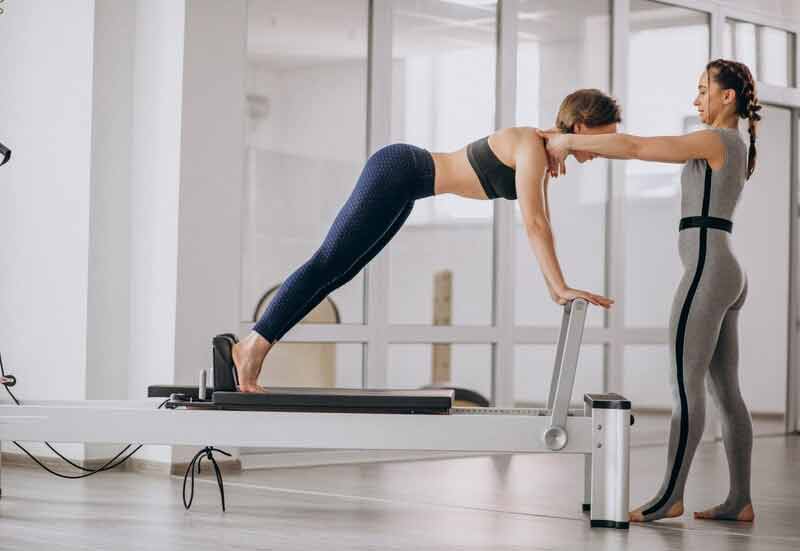
While there are some similarities between the two, there are also important differences that set them apart. In this article, we’ll take a closer look at the differences between Pilates and yoga, and explore the benefits of each.
Origins
Pilates was developed by Joseph Pilates in the early 20th century as a form of exercise to improve physical fitness and rehabilitation. Pilates was originally called “Contrology” and was designed to help people improve their posture, balance, and core strength.
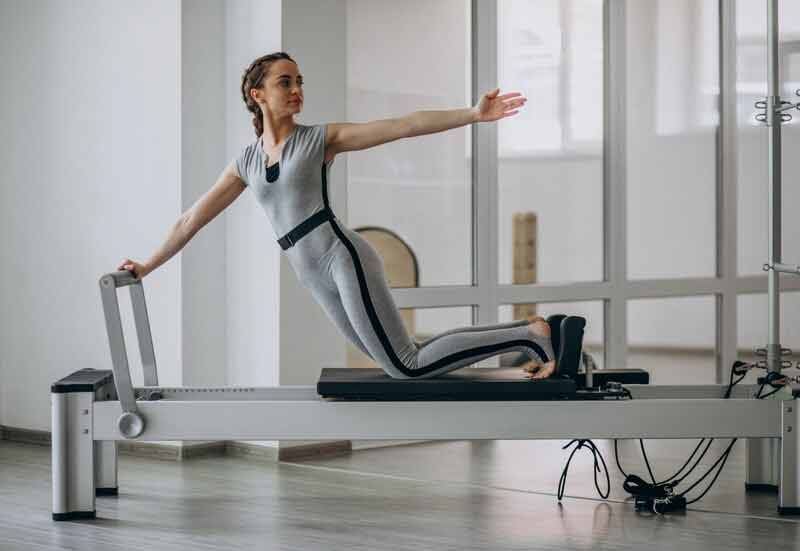
Yoga, on the other hand, is an ancient practice that dates back to the Indus Valley civilization over 5,000 years ago. Yoga includes physical postures, breath control, meditation, and ethical principles, and is often associated with spiritual and religious practices.
Types of Practice
Both Pilates and yoga have evolved over the years to include a variety of different practices and styles. This exercise is typically practiced on a mat or with specialized equipment such as the Pilates reformer, while yoga can be practiced on a mat or with props such as blocks and straps.
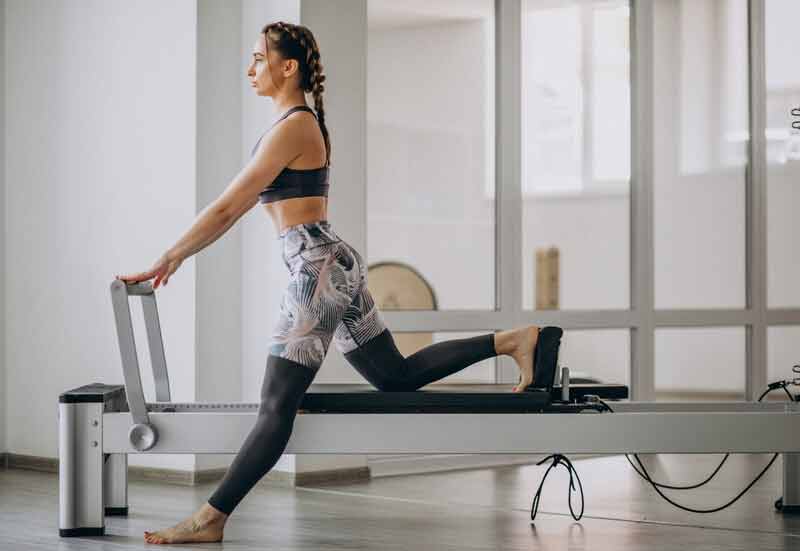
Pilates classes can be divided into two main types: mat classes and equipment-based classes. Mat classes involve performing Pilates exercises on a mat, while equipment-based classes use machines such as the Pilates reformer, Cadillac, and Wunda Chair.
Yoga is also divided into different styles, including Hatha, Vinyasa, Ashtanga, Bikram, and Iyengar, among others. Each style has its own unique characteristics and focuses on different aspects of the practice.
Breathing
Breathing is an important component of both this exercise and yoga, but the techniques used are different. In Pilates, breathing is often described as “lateral thoracic breathing” or “rib cage breathing”, which involves inhaling through the nose and expanding the rib cage in all directions, and exhaling through the mouth while contracting the abdominal muscles.
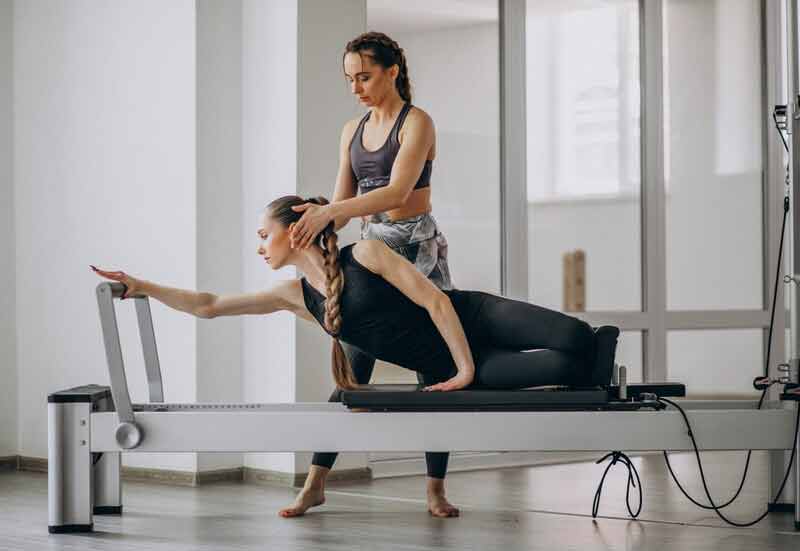
In yoga, breathing is known as “pranayama” and involves different techniques such as “ujjayi” breathing, which involves inhaling through the nose while contracting the back of the throat and exhaling through the nose while maintaining the throat contraction.
Focus
The focus of Pilates is on developing core strength, improving posture, and increasing overall flexibility and balance. Pilates exercises target specific muscles in the body, including the abdominals, glutes, and back muscles.
Yoga, on the other hand, has a broader focus that includes physical postures, breathing, meditation, and ethical principles. Yoga aims to improve physical health, mental clarity, and spiritual well-being. The physical postures, or “asanas”, are designed to stretch and strengthen the body, improve flexibility, and promote relaxation.
Equipment
Pilates classes often use specialized equipment such as the Pilates reformer, Cadillac, and Wunda Chair. These machines use springs and pulleys to create resistance and assist with stretching and strengthening the body.

Yoga, on the other hand, typically only requires a yoga mat and some props such as blocks and straps to aid in certain postures.
Intensity
Pilates and yoga can both be challenging forms of exercise, but the intensity levels can vary depending on the style of practice. These exercises are typically low-impact and focus on controlled movements that target specific muscles. Pilates classes can be modified to suit all fitness levels, making it a good choice for beginners and those with injuries or limitations.
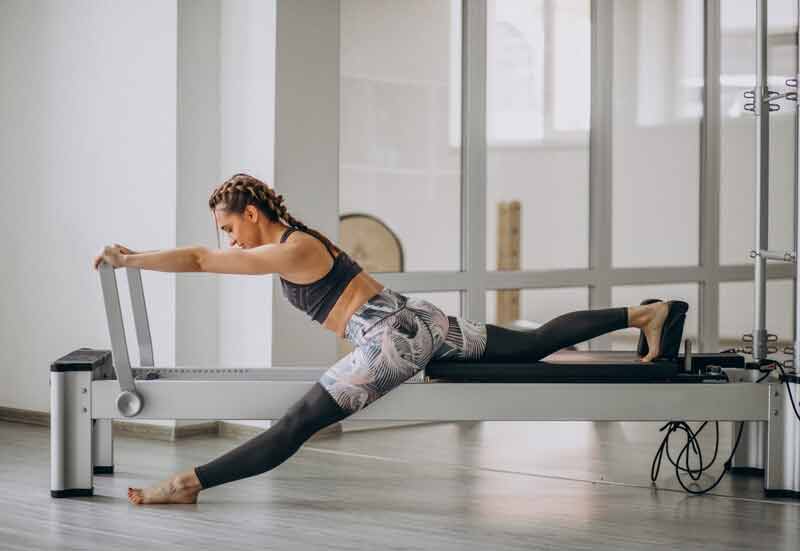
Yoga can be more intense, especially when practicing a more vigorous style such as Vinyasa or Ashtanga. These styles involve flowing from one posture to the next in a continuous sequence, which can increase the heart rate and provide a cardiovascular workout. However, there are also gentle styles of yoga such as Restorative and Yin that are more suitable for beginners or those looking for a more relaxing practice.
Benefits
Both this exercise and yoga offer a range of physical and mental benefits. Pilates can help improve posture, balance, and core strength, which can lead to a reduction in back pain and other injuries. Pilates also helps increase flexibility and range of motion, making it a good choice for athletes and dancers.
Yoga can also help improve posture and increase flexibility, but it also offers a range of mental health benefits. Yoga is known for its ability to reduce stress and anxiety, improve mood, and promote relaxation. The breathing techniques used in yoga can help calm the mind and reduce feelings of tension and anxiety.
Which is Right for You?
Choosing between Pilates and yoga depends on your fitness goals and personal preferences. If you’re looking to improve core strength and posture, Pilates may be the better choice. If you’re looking to reduce stress and improve mental clarity, yoga may be the better choice.
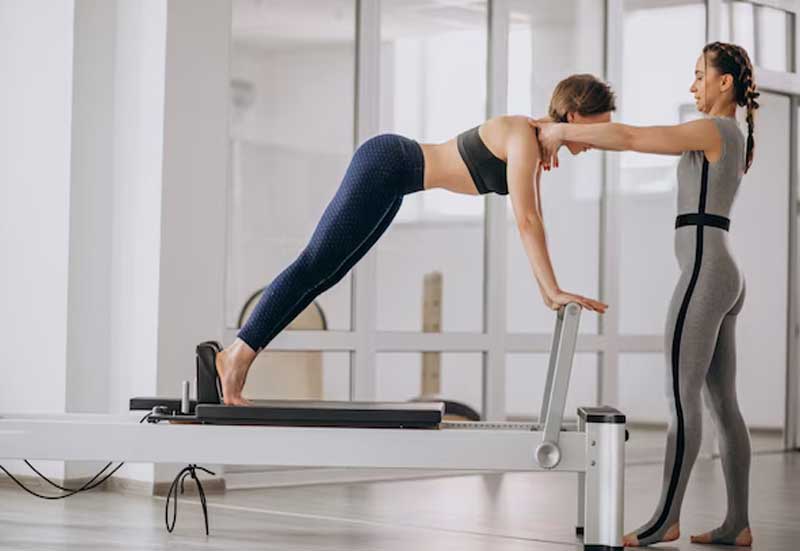
It’s also important to consider any physical limitations or injuries you may have. This exercise can be modified to suit all fitness levels, but it’s important to work with a qualified instructor who can help you make modifications as needed. Similarly, yoga can be modified to suit different abilities, but it’s important to inform your instructor of any injuries or limitations you may have.
Ultimately, the best way to determine which is right for you is to try both this exercise and yoga and see which one resonates with you. Many studios offer introductory classes or class packages that allow you to try both and decide which one you prefer.
Conclusion
This exercise and yoga are both popular forms of exercise that offer a range of physical and mental health benefits. While there are some similarities between the two, they are also unique in their focus and approach. Pilates is designed to improve core strength and posture, while yoga is designed to promote relaxation and mental clarity.
Whether you choose Pilates or yoga depends on your individual fitness goals and personal preferences. Both forms of exercise can be modified to suit different abilities and limitations, and it’s important to work with a qualified instructor to ensure you are performing the exercises correctly and safely.
Ultimately, the most important thing is to find an exercise routine that you enjoy and that fits into your lifestyle. Pilates and yoga are both great options for improving your physical and mental health, and with regular practice, you can reap the benefits of both.
The last word is with you, the audience
Be sure to read other educational articles. For scientific issues, be sure to contact a specialist doctor. These materials are only for study and non-educational purposes. Of course, expert doctors can guide you a lot.
Our cooking training center has collected unique materials for you dear ones. This content is very useful and will help you cook the best and most delicious food for yourself and your loved ones at home.
The recipe section is for introducing the best dishes of the nations. Dear ones, you can see the best dishes in this section and cook whatever you want at home. Don’t forget to read the recipe and ingredients before doing anything to determine your cooking needs.
Soon we will be with you with a more professional team with more facilities. We suggest that if you are overweight, fill out the and wait for our experts to contact you and send you the right meal plan.
The slogan we put on our site is to fight obesity. In this regard, we will provide you with many suitable recipes. Be sure to follow our site to learn about many healthy foods. Do not forget that a healthy life requires extensive changes. One of these changes is changing food. So eat healthy
Please follow us on linkedin. You can learn all best french food recipe and best Italian food recipe and best arabic food recipes and best Iranian food recipes you can check our Reddit page.
